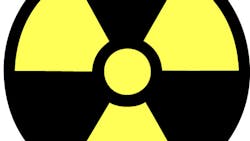Understanding In-Flight And In-Space Radiation Effects On CMOS Devices
This file type includes high resolution graphics and schematics when applicable.
Space, including the higher reaches of Earth’s atmosphere, is populated by many high-energy particles that can damage semiconductor devices. For example, there are electrons and protons in the Van Allen belts, galactic cosmic rays (which comprise about 85% protons, 14% alpha particles, and 1% heavy ions), and cosmic rays from solar flares (which also contain ultraviolet and X-rays). There are secondary particles from cosmic rays that reach all the way to the earth’s surface as well.
Permanent Radiation Damage To Silicon Devices
Neutrons, protons, alpha particles, heavy ions, and very high-energy gamma rays that transfer enough energy to the silicon to displace atoms in the lattice all cause lattice defects. Charged particles and gamma rays create ionization, which can alter device parameters. These changes are called total ionizing dose (TID) effects. For example, charge-sheet buildup near the silicon/silicon-dioxide (Si-SiO2) interface in MOS structures creates shifts in threshold voltages and leakage currents.
Recoverable Damage: Single-Event Effects
In addition to permanently damaging to CMOS ICs, radiation may cause single-event effects (SEEs): single-event upsets (SEUs), single-event functional interrupts (SEFIs), single-event transients (SETs), and single-event latchups (SELs).
SEUs are transients induced by charged particles that lose energy by ionizing the crystal lattice, leaving a wake of electron-hole pairs. The charged particles usually arise from the radiation belts or from cosmic rays
SEUs can generally be overcome by a reset or a rewrite. However, an SEU may evolve into a SEFI if the device’s control circuitry places it into a test mode, halt, or undefined state. Unlike SEUs, SEFIs need a power-reset to recover.
SETs occur when charge collection from an ionization event creates a spurious signal that propagates through the circuit. Like SEFIs, they are recoverable. And, SELs occur when a single event causes a high current state. They may destroy the device, or they may be recoverable with a power-reset.
About the Author

Don Tuite
Don Tuite (retired) writes about Analog and Power issues for Electronic Design’s magazine and website. He has a BSEE and an M.S in Technical Communication, and has worked for companies in aerospace, broadcasting, test equipment, semiconductors, publishing, and media relations, focusing on developing insights that link technology, business, and communications. Don is also a ham radio operator (NR7X), private pilot, and motorcycle rider, and he’s not half bad on the 5-string banjo.

